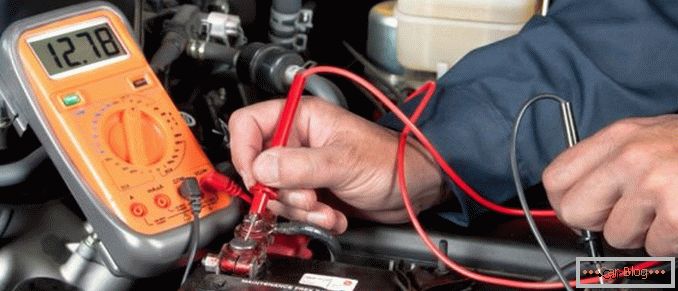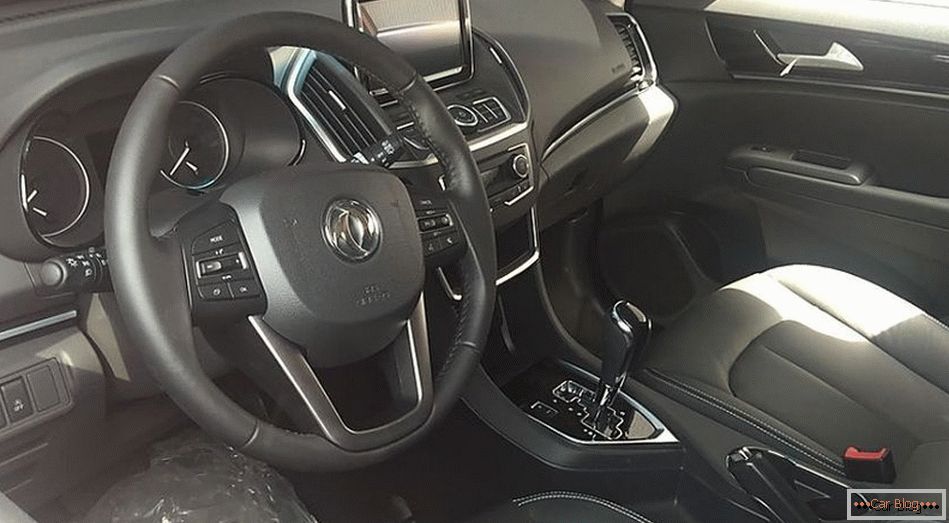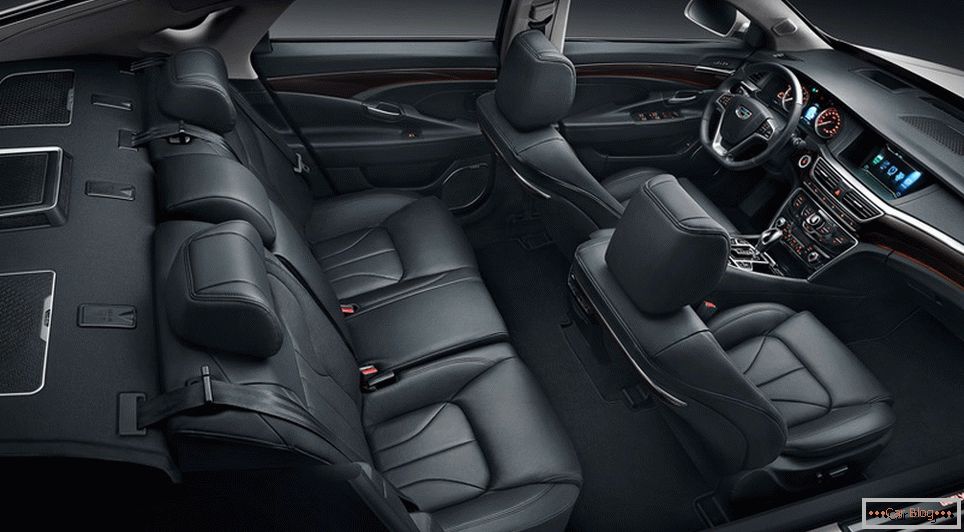Every driver probably wondered at least once what to choose - timing belt or chain. This question is one of the most popular, akin to a dispute about mechanics and machine guns. Many car manufacturers increasingly prefer the belt. It is put on Volkswagen, Toit and Opel with V8 and V6 engines.
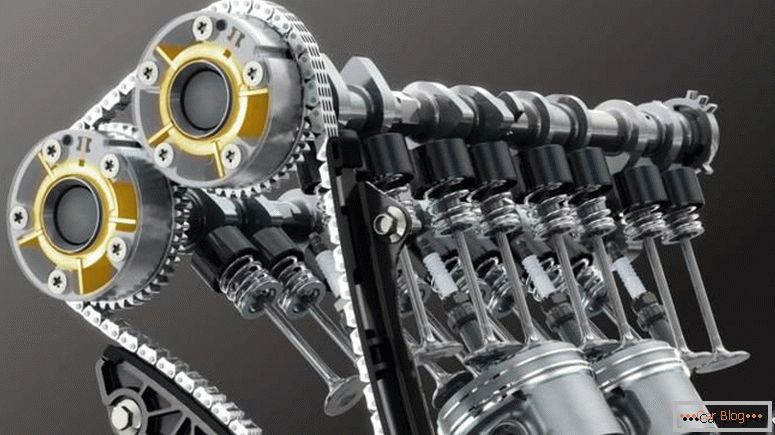
However, disputes among the people do not subside. In our material we will try to put all the points above and, to understand all the pros and cons regarding the most acceptable variant of the camshaft drive.
Chain: features, life, replacement cost
If we talk about the chain, then this method has been tested for long years of operation, it is relatively easy and if we take into account the total cost of the engine, the chain will be a small part of it. Of course, such an engine makes a lot of noise. It's true. But after all, cars do not stand still, but develop, improving the sound insulation of the exterior and interior. Modern iron horses are so good that in most cases the noise of the engine is not audible at all, and if it comes, it is absolutely not annoying. For example, the engines from the Volkswagen Series EA111 - 1.6-liter atmospheric and 1.4-liter TSI - they have identical chains, and the atmospheric is much more noisy. In this case, the problem is hidden deeper. In the old motors, the chains were set double-row, because it was impossible to immediately break this mechanism. But with wear, the chains were stretched and created a lot of noise. In this case, rarely jumping on a pair of teeth on the gears of the drive.
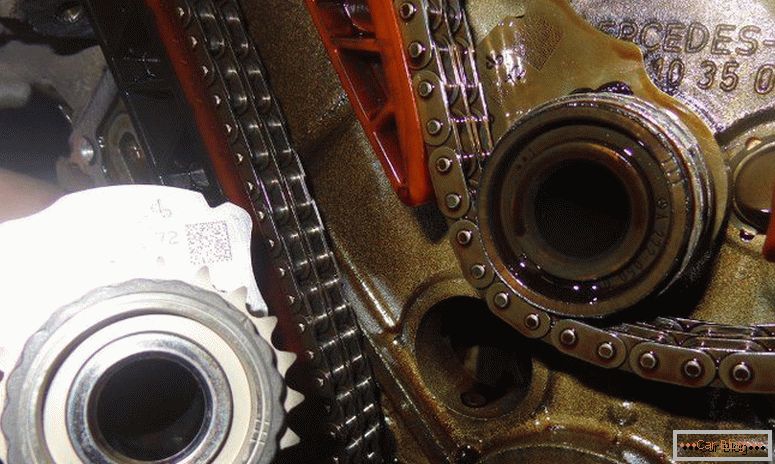
When the length of the motor began to pay special attention, the situation has changed. To be able to increase the volume of the cabin, began to reduce the engine compartment. On the front-wheel drive cars at all began to install the engines across. However, began to shorten the length of the chain. All chains became single-row and acquired a good compactness. Now the thickness of the chain, even on a powerful engine, is comparable to the thickness of the bicycle chain.
Chain width it matters not only because there is a need to lighten the circuit. Another factor is the position of the circuit in the oil bath of the motor, inside the unit. Because of this, the block and the cylinders and its head should be longer by the width of the chain. All this is an extra metal that weights the mechanism. In addition, thin chains often become torn. Loud noise is one of the signs that the circuit has failed. The fact is that, together with the noise of the engine, the noise from the circuit is not very expressive, so you can easily miss the moment when it suddenly breaks.
Double row chains in this case they were more profitable, because they could continue to work after the breakage of one branch, because the load on both branches was distributed more evenly. The teeth of the stars wear out more slowly, so if the chain was made of durable alloys, it could be considered "eternal." In such a case, it was necessary to replace the chain only during the overhaul of the motor.
Recommended article: Shoots carburetor (VAZ 2109) and other carb faults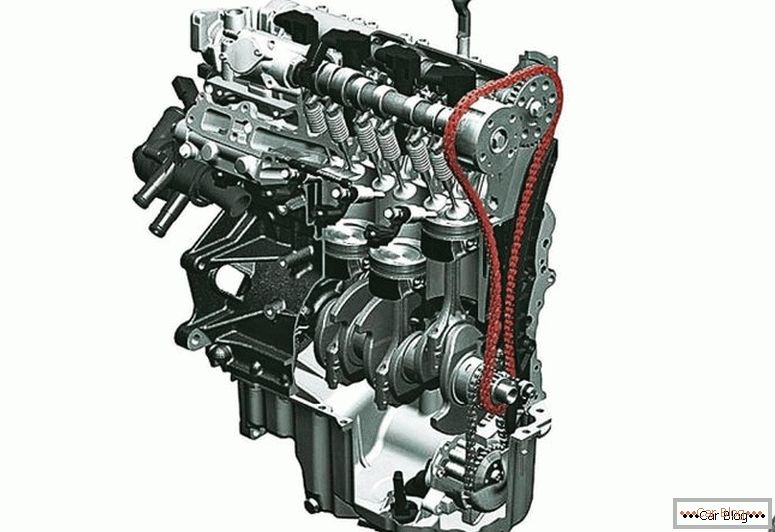
The tendency to simplify the design and the desire to extend the life of the engine caused new problems. Chains have lost their durability and no longer exceed the timing belts in service life. At the same time, the design with the chain is much more complicated than the analogue with a belt, and replacing the chain is quite expensive, and the diagnostics of the technical condition of this part is very complicated.
The average cost of replacing the chain mechanism on a four-cylinder engine is at least $ 500, and replacing the timing belt will cost $ 150-200. Therefore, when buying a car with a chain engine, it is worth particularly careful diagnosis of the timing drive. It is important to take into account all the nuances and check every little thing.
Why are chain motors still popular?
Someone may appear to believe that the chain mechanism is completely unsuitable and is a relic of the past. However, this is an erroneous opinion, because if it were true, the belt would have long come to the fore.
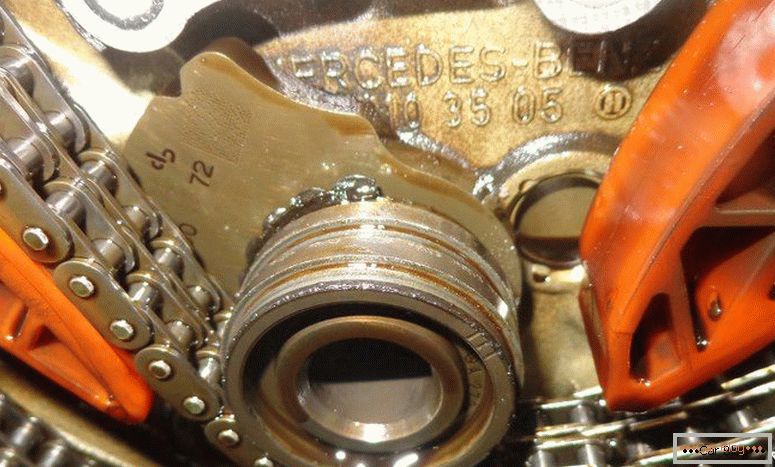
Chains have their advantages. The first and main advantage is full protection from any adverse external factors: contact with moisture and precipitation, exposure to temperature. The chains will have nothing from frost and heat, dirt and snow, which the belt is afraid of. The second important advantage of the chain is accuracy in setting the timing phases. Under heavy loads, the chain cannot deform, so even at high speeds in the motor, the initial installation of the shafts will remain. And this in turn can be called a guarantee of preserving the high power characteristics of the motor. The third advantage is good resistance to periodic overloads, which occur rarely, but are several times more powerful than the nominal ones. In such a situation, a working chain tensioner will not jump from tooth to tooth, and the valve timing will not be disturbed.
It is important to understand that systems with variable timing phases must be equipped with simpler phase shifters on chain-driven camshafts. They do not need sealing, because phase shifters work on the principle of oil circulation. Chains need oil for work, and the belt does not tolerate contact with this oily liquid.
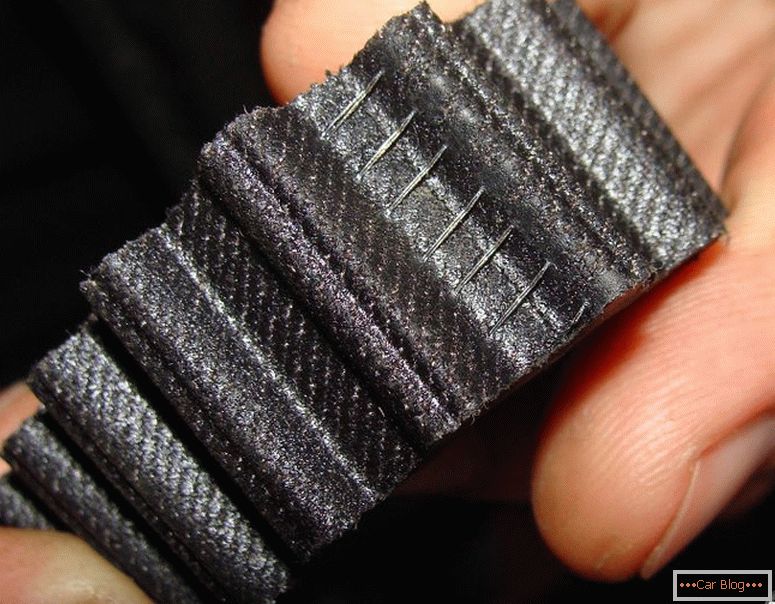
Actually, these are all advantages of a chain drive. To summarize: the resource of modern type chains is not much higher than that of belts, and in exceptional cases, belts demonstrate even greater performance. Given the high cost of replacing the chain. Price is a defining moment, so the chain is changed only in extreme cases, and this is quite dangerous. In this vein, the use of a belt looks more practical and safer.
Recommended article: Land Rover Discovery 3 Chip Tuning: A New Look for Your SUVIn the chain drive, the hydraulic tensioner does not work well, if the oil pressure is low, so a chain jump may occur during the start and sudden pressure drops, which means poor compatibility with start and stop systems, as well as oil pumps that can be adjusted. This site is quite expensive to work through. It often happens that the tensioner malfunctions during the reverse rotation of the motor, for example, during any operations in the service station or when you put the car into gear uphill, in this case, the circuit will easily jump to a couple of teeth, so during start of the motor is all sad.
Belt Benefits
One of the most important advantages of a belt is its ability to bend in different directions, that is, elasticity. This allows the drive to cope with torsional vibrations, which on multi-cylinder engines with a complex structure can have a strong influence on the vibration load and life of the shaft beds.
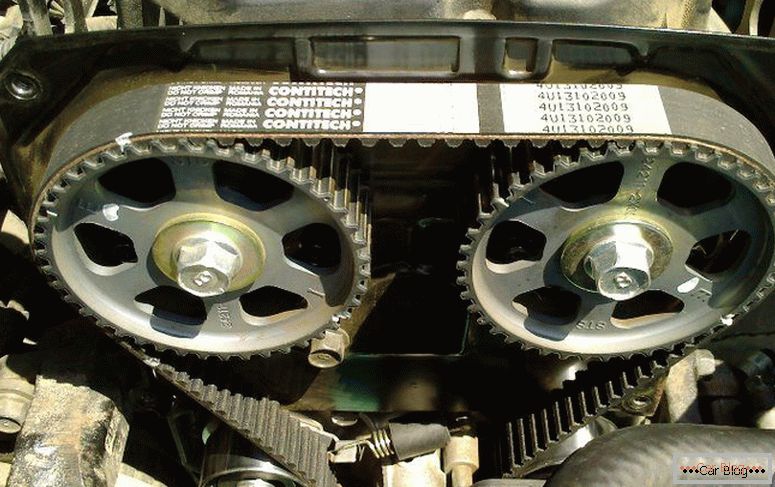
Another advantage of the belt is its quiet work. The belt is usually quite long, which contributes to a good tightening with a mechanical tensioner, without affecting the timing of the installation phase. They do not need additional lubrication. The belt is able to work equally well on a cold and on a warm engine. Resource details does not depend on the materials used for lubrication, as well as oil pressure.
It is not difficult to diagnose a belt malfunction, and its replacement is easy to implement even without disassembling the engine block. Cheaper belt - one more plus of the mechanism, besides, it can be easily replaced according to the regulations, without waiting for the critical level of wear of the part. Finally, thanks to the belt, the engine can be equipped with a more compact and lightweight cylinder block.
Belt flaws
Of course, the belt, like the other mechanism, has its drawbacks. One of the biggest is vulnerability. Sadly, the belt is afraid of oil, water and cold weather. The materials from which the belts are made have a tendency to aging, and the belt resource is measured not by kilometers, but by years. So if the car was in the garage, the belt still gets old and fails.
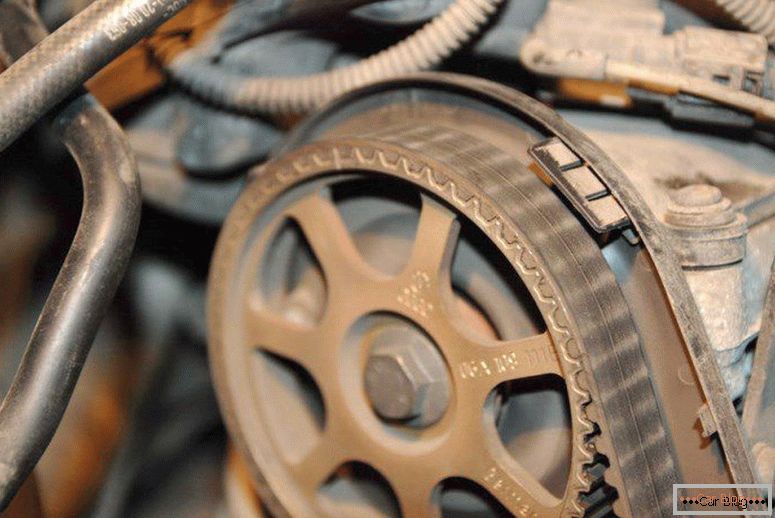
If you increase the load on the belt to the limit, it can slip. This also applies to the sharp torsion of the engine. When the belts are installed on the latest engines, it increases the risk of oil on the belt. Previously, motors were widely distributed, the design of which suggested protection against the lack of reliability of a timing belt drive. If the belt suddenly breaks, the camshaft immediately stops moving synchronously with the crankshaft. Because of this, the pistons immediately begin to beat the valves, which remained in the "open" position.
Recommended article: Mitsubishi Pajero Sport I: how to choose a live carSumming up
What to choose? If you compare all the characteristics of the chain and belt, weigh all the pros and cons, you will find that these two mechanisms oppose the stability and quality of the life of the belt and the affordable price for its replacement, and more resistant to the adverse effects of the chain, which quite expensive, and the work depends largely on the lubrication and operating modes of the motor.
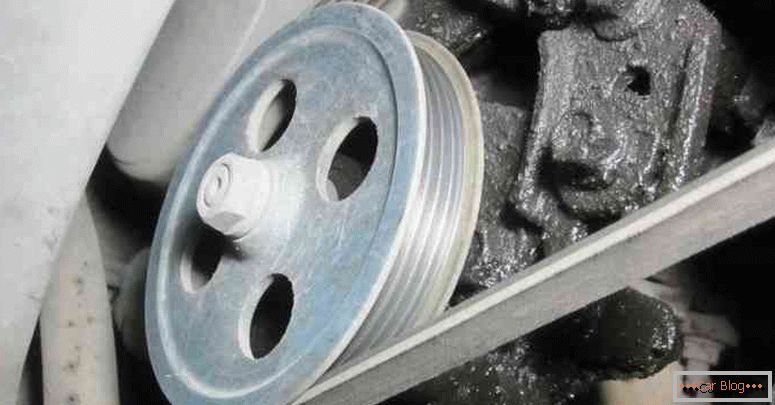
Car manufacturers are constantly looking for the right solution. Two sets of characteristics compete with each other, so there is no advantage to one side. Opinions usually diverge. Volkswagen engines in the most affordable price segment most often use a belt, and not an unsuccessful chain. Even on the most powerful engines of the German automaker, there are also belts.
The mid-size EA888 engines are still using a chain mechanism, which works quite successfully there. Sometimes Volkswagen masters even combined two mechanisms. In this case, the chain was used to synchronize the rotation of the two camshafts, and one of them was driven using a belt.
Opel, along with General Motors now use chain drive for all engines, including the smallest. Even in spite of only the relative reliability of the chain drive of the mid-size engine family. However, the manufacturer had no problems with the belts.
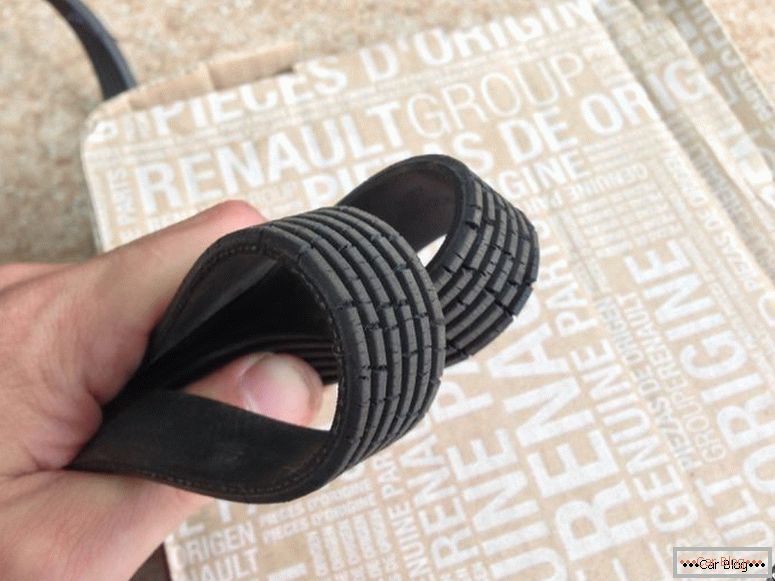
BMW uses only chains on its famous engines, but the success of this event is very messy. Sometimes BMW resorts to frankly unsuccessful relief of structures, and sometimes a good chain can last even longer than the motor itself. With the timing belt, the German flagship produced an excellent M40 engine, the reliability of which never raised any questions.
Summing up, we can say that it is impossible to predict exactly which type of timing will be more reliable. To compare, you need to refer to specific examples, in addition, it is important to take into account the probability of errors of designers and the operating conditions of the motor. The belt can really be reliable, so you should not be afraid of using it. Chains are reliable though, but in case of failure, the price for replacing you will be unpleasantly surprised.
As a supplement, we suggest watching a detailed video about replacing the timing belt in a VAZ 2112 vehicle:

